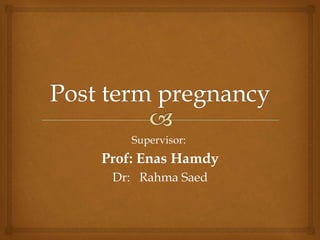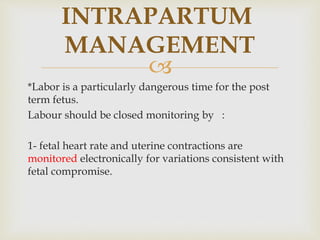This document discusses post-term pregnancy, which refers to pregnancies that go beyond 42 weeks gestation. It defines key terms like early, full, late, and post-term. Post-maturity syndrome affects 10-20% of pregnancies at 42 weeks and is characterized by wrinkled skin and wasting. Risk factors for post-term pregnancy include inaccurate dating, genetic factors, and previous post-term pregnancies. Complications include fetal distress, meconium aspiration, and increased need for induction and C-section. Management of post-term pregnancy involves induction of labor at or beyond 42 weeks or expectant management with fetal surveillance.



























































